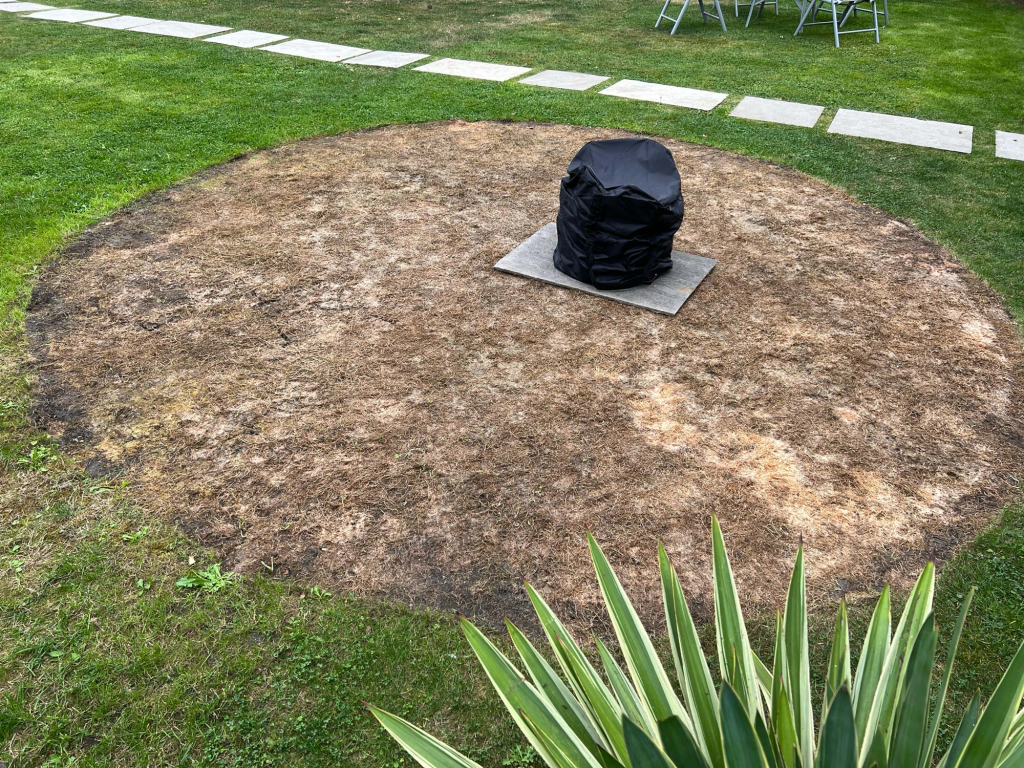Summer appears to be over, and for many Brits that means packing up the summer garden equipment to get ready for the colder weather. This includes the arduous task of cleaning out and putting away the ever popular paddling pool or temporary swimming pool.
But according to MyBuilder.com, the reliable way to hire tradespeople, this common garden item represents one of the biggest risks to our lawned areas. The most significant peril for lawns over summer is the damage done by placing items on top of the grass – particularly paddling or swimming pools. Plants need sunshine and oxygen to survive and thrive, so keeping your pool on your grass is practically suffocating it.
It just takes one day of a pool being left on grass for it to show signs of turning yellow; this is because there is no water, air, or sunlight. By days two to three, the lack of these factors will trigger a dormant state of grass. Finally, after a pool is left for about two weeks on the same patch of grass, the grass will be dead.
Despite these downsides, many of us still enjoy getting the paddling pool out, and it can be a necessity during those super hot days. So how do we repair the damage?
Expert gardener James Lewis, of MyBuilder.com, said that there are many myths around how to protect lawns – many of which are completely inaccurate.
“It’s a common belief that laying a mat or carpet down on your lawn before putting down a paddling or swimming pool will save your grass – but that’s totally untrue.
“Mats, tiles, foam squares, sand – none of these things will change the fact that placing a pool onto grass will stop the plant accessing the very elements it needs to survive – oxygen, and sunlight.
“The good news is that grass is extremely resilient, and with some simple steps you can sort it out.”
Tips from the MyBuilder.com expert include:
Rake it up
If the grass is not completely dead, a simple fix is just to rake it up to standing position again, and let the grass do the rest. If you’re lucky, with good soil and weather, the grass will take just a week to recover.
Keep on watering
Another way to make your yellow grass have a speedy recovery is to make sure it’s watered correctly after the paddling pool is moved, as well as adding fertiliser to give it the nutrients it’s deprived from. Hydrate it daily even if it appears dead, and hopefully you will see it re-emerge in a matter of days.
Mowing
Weeds thrive in low light conditions, which will have been created by any sort of pool covering it. By mowing the area to cut back the weeds, it will encourage grass to grow back. To add to this, place grass chippings on the area and it will add nutrients to the soil.
Grass Seed
Grass is very hard to grow in the cold seasons, so therefore aim to move the paddling pool and reseed at least 45 days before the first expected frost (which can come as early as October). Most grass species take about six to eight weeks to be fully grown with no patches.
Lay Turf
Watching grass grow is like watching a clock tick. For many impatient people out there, a quick way to fix your dead grass is to try laying turf on the lawn after removing the dead grass. Add compost or fertiliser beneath the new turf, add topsoil if the land is uneven, and keep it well drained and watered until the grass has become established.
Avoid Tipping Water
Many people think that tipping your paddling pool water on the grass is helping it thrive. However, you are actually risking overwatering and waterlogging your grass which could potentially destroy the area. So avoid tipping paddling pool water on your precious grass. Instead, use the water to water any other plants or to pour into different corners of your garden, distributing the water in various places.



